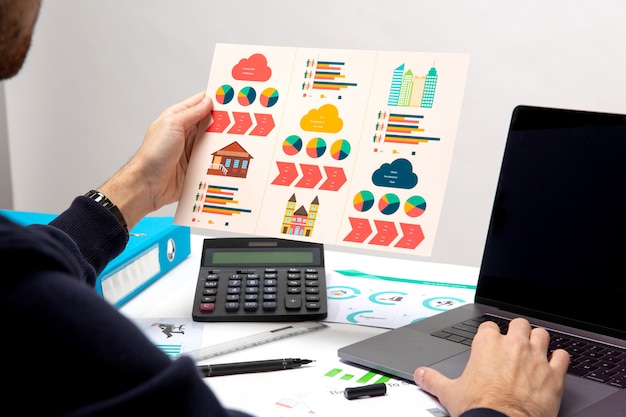The Psychology of Pricing
The Psychology of Pricing
When it comes to setting prices for your products or services, it's easy to get caught up in the numbers game. You might think that the key to success lies in finding the perfect balance between revenue and affordability. However, the truth is that pricing is just as much about psychology as it is about economics. In this article, we'll delve into the fascinating world of cognitive biases and explore how they influence customer behavior. By understanding the psychology of pricing, you'll be able to optimize your pricing strategy to boost sales and build customer loyalty.
The Power of Anchoring
Imagine walking into a store and seeing a sign that reads, "This TV was $1,000, but now it's on sale for $800!" You might think that the TV is a great deal, but what if I told you that the original price was just a clever marketing trick? This is an example of the anchoring effect, a cognitive bias that refers to our tendency to rely too heavily on the first piece of information we receive when making a decision.
In the context of pricing, anchoring can be a powerful tool. By setting a higher "regular" price, you can make your sale price seem more attractive by comparison. This can be especially effective when combined with other pricing strategies, such as discounts or bundle deals.
"The anchoring effect is a fundamental aspect of human decision-making, and it has a profound impact on our perception of value." - Dan Ariely, Predictably Irrational
The Loss Aversion Effect
Let's say you're considering two different pricing options for your product: a flat rate of $100 or a discounted rate of $80 with a 20% discount. Which one do you think would be more appealing to customers? If you said the discounted rate, you're right! This is because of the loss aversion effect, a cognitive bias that refers to our tendency to prefer avoiding losses over acquiring gains.
In the context of pricing, loss aversion can be used to your advantage by framing your prices in terms of what customers will save rather than what they'll spend. For example, instead of saying "this product costs $100," you could say "you'll save 20% off the regular price of $125."
The Social Proof Effect
When was the last time you bought something without reading reviews or asking for recommendations? If you're like most people, you probably rely heavily on social proof when making purchasing decisions. This refers to our tendency to follow the actions of others when we're uncertain or lack information.
In the context of pricing, social proof can be used to justify premium prices by highlighting customer testimonials, reviews, and ratings. By showcasing the experiences of satisfied customers, you can build trust and credibility with potential buyers.
Scarcity and Exclusivity
Imagine you're at a concert and the artist announces that they'll be selling a limited edition merchandise item to the first 100 fans who buy it. Suddenly, the item becomes incredibly desirable, not just because of its quality or price, but because of its exclusivity. This is an example of the scarcity effect, a cognitive bias that refers to our tendency to place a higher value on things that are rare or hard to obtain.
In the context of pricing, scarcity and exclusivity can be used to create a sense of urgency and drive sales. By limiting the availability of a product or offering exclusive deals to loyal customers, you can create a sense of FOMO (fear of missing out) that motivates people to buy.
Pricing Psychology in Practice
So, how can you apply these principles to your pricing strategy? Here are a few examples:
- Use anchoring to make your prices seem more attractive by comparison
- Frame your prices in terms of what customers will save rather than what they'll spend
- Highlight customer testimonials and reviews to build trust and credibility
- Create a sense of scarcity and exclusivity to drive sales and motivate customers
Some companies that have successfully applied these principles to their pricing strategies include:
- Apple, which uses anchoring to make its products seem more premium
- Amazon, which uses social proof to build trust and credibility with customers
- Luxury brands like Gucci and Louis Vuitton, which use scarcity and exclusivity to create a sense of exclusivity and drive sales
Case Study: The Pricing Strategy of Warby Parker
Warby Parker is a fashion brand that has disrupted the eyewear industry with its affordable and stylish glasses. One of the key factors behind the company's success is its pricing strategy, which uses anchoring and social proof to drive sales.
When you visit the Warby Parker website, you're presented with a range of stylish glasses at affordable prices. However, what you might not notice is that the company uses anchoring to make its prices seem more attractive. For example, the company offers a "home try-on" program that allows customers to try up to five frames at home for free. This creates a sense of value and makes the eventual purchase seem more justified.
Warby Parker also uses social proof to build trust and credibility with customers. The company showcases customer testimonials and reviews on its website, and it has a strong social media presence that encourages customers to share their experiences with the brand.
The Thrill of Uncertainty
The psychology of pricing is not just limited to the world of commerce; it also plays a significant role in our leisure activities. Take, for instance, the thrill of playing games of chance. The uncertainty of winning or losing can be a powerful motivator, releasing feel-good chemicals in our brains and keeping us coming back for more. This phenomenon is closely related to the concept of variable rewards, a key component of many pricing strategies. By providing unpredictable rewards, businesses can create a sense of anticipation and excitement, driving engagement and loyalty. In fact, this principle is expertly applied in Eye of Horus Tablets of Destiny slot online demo (Blueprint Gaming), where players are treated to a thrilling experience of chance and reward. As we've seen in the context of pricing, our brains are wired to respond to uncertainty and unpredictability, making games like these incredibly compelling. By tapping into this psychological quirk, businesses can create experiences that are both engaging and addictive.
Conclusion
The psychology of pricing is a complex and fascinating topic that can help you optimize your pricing strategy and drive sales. By understanding cognitive biases like anchoring, loss aversion, and social proof, you can create a pricing strategy that resonates with customers and builds trust and credibility. Remember, pricing is not just about economics – it's also about psychology.
Some benefits of incorporating psychology into your pricing strategy include:
• Increased sales and revenue • Improved customer satisfaction and loyalty • Enhanced brand reputation and credibility • Better differentiation from competitors • More effective marketing and advertising efforts
By applying the principles outlined in this article, you can unlock the secrets of customer perception and create a pricing strategy that drives business success.

